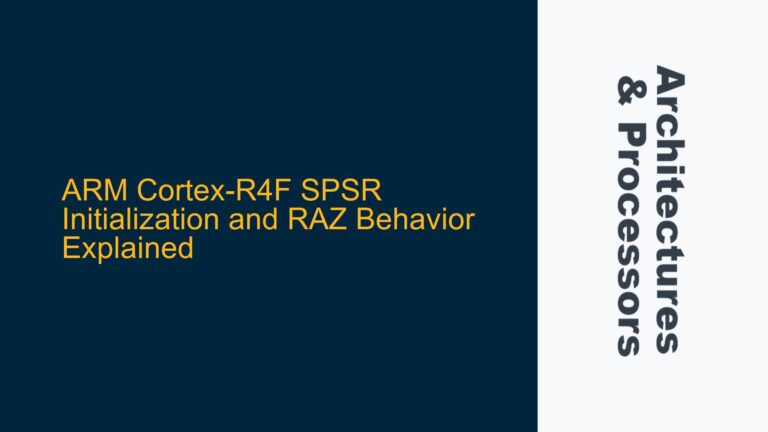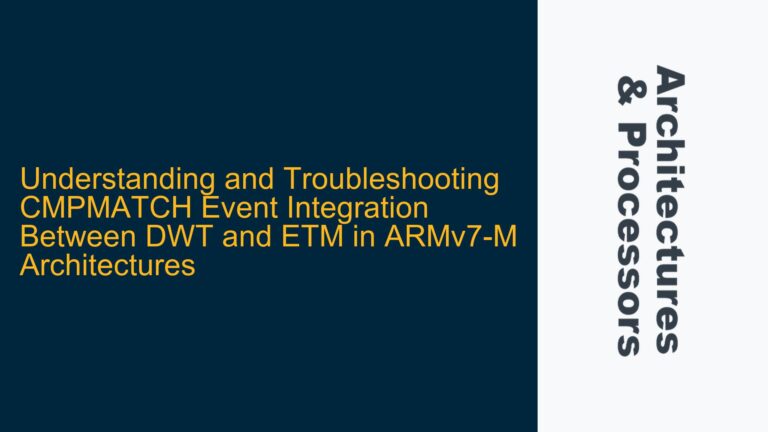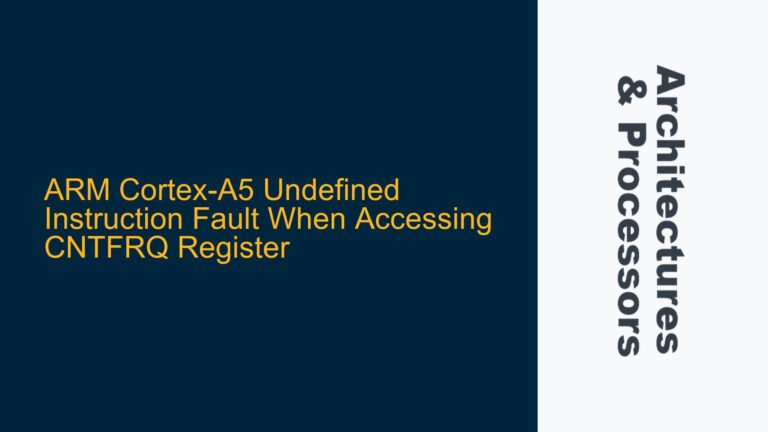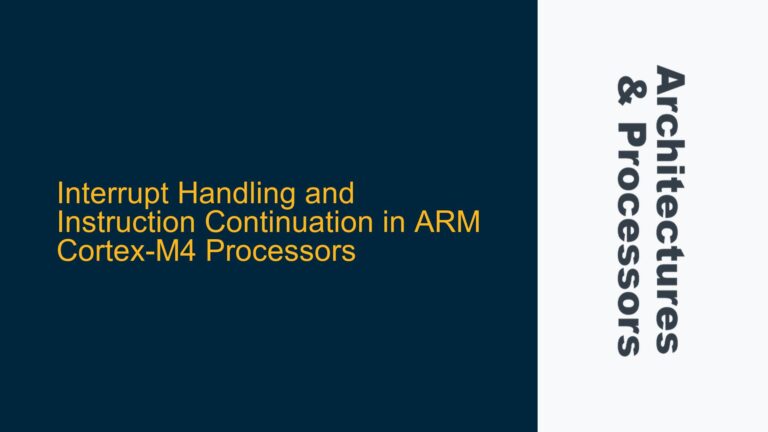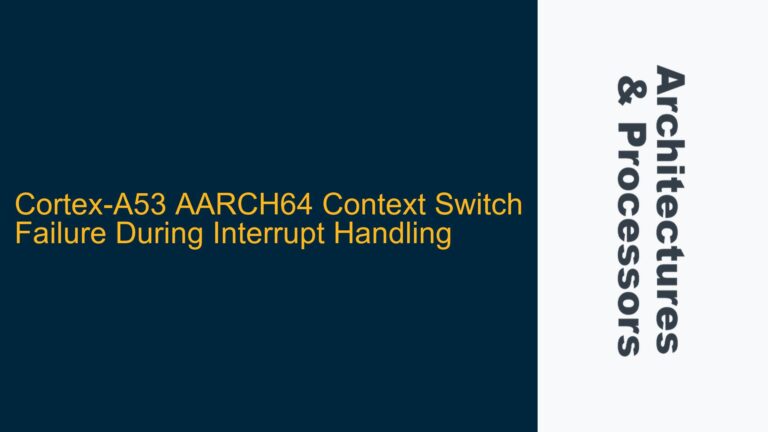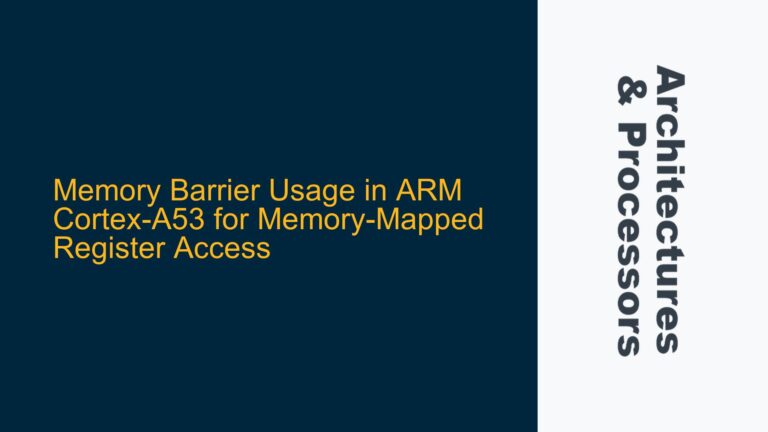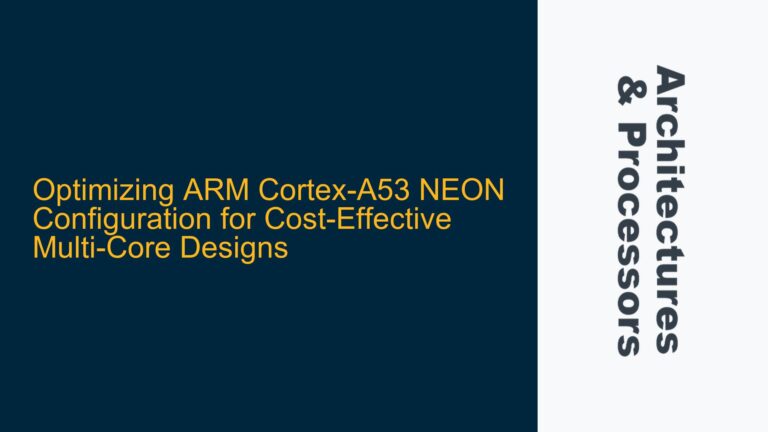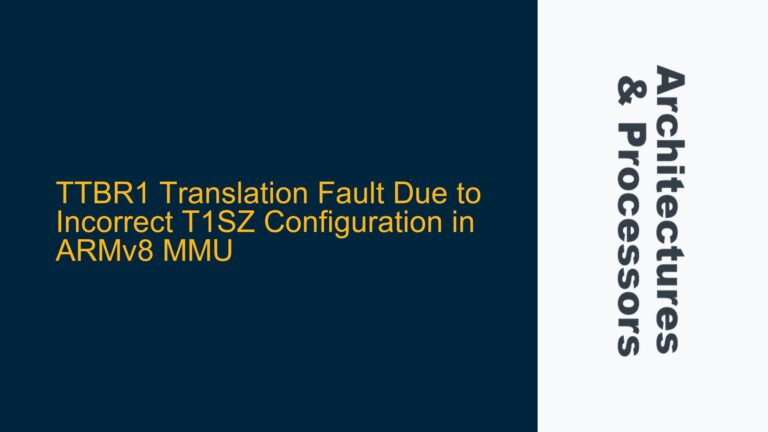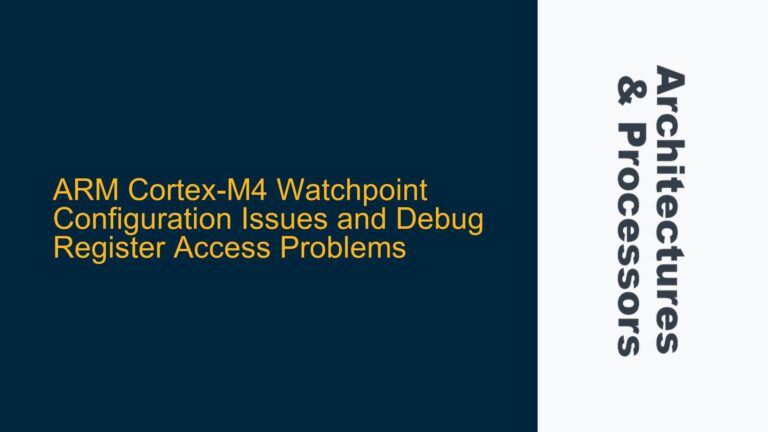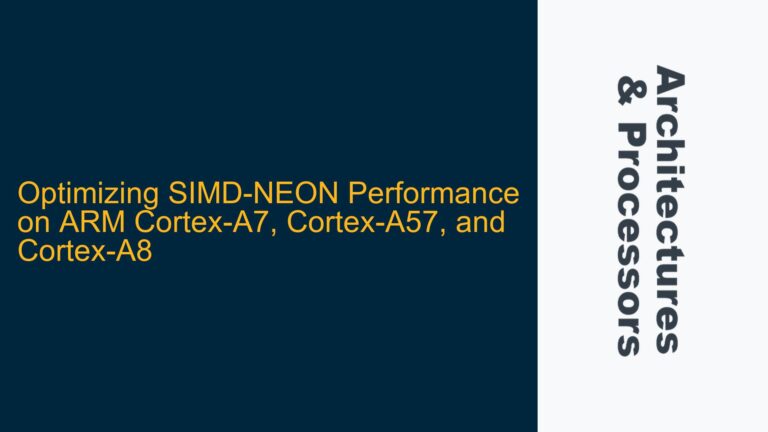ARM Cortex-R4F SPSR Initialization and RAZ Behavior Explained
SPSR Initialization Issue with Unexpected RAZ Behavior The ARM Cortex-R4F processor, like many ARM cores, includes the Saved Program Status Register (SPSR), which is used to store the processor state when an exception is taken. The SPSR is a critical register for exception handling, as it allows the processor to restore the original state after…
